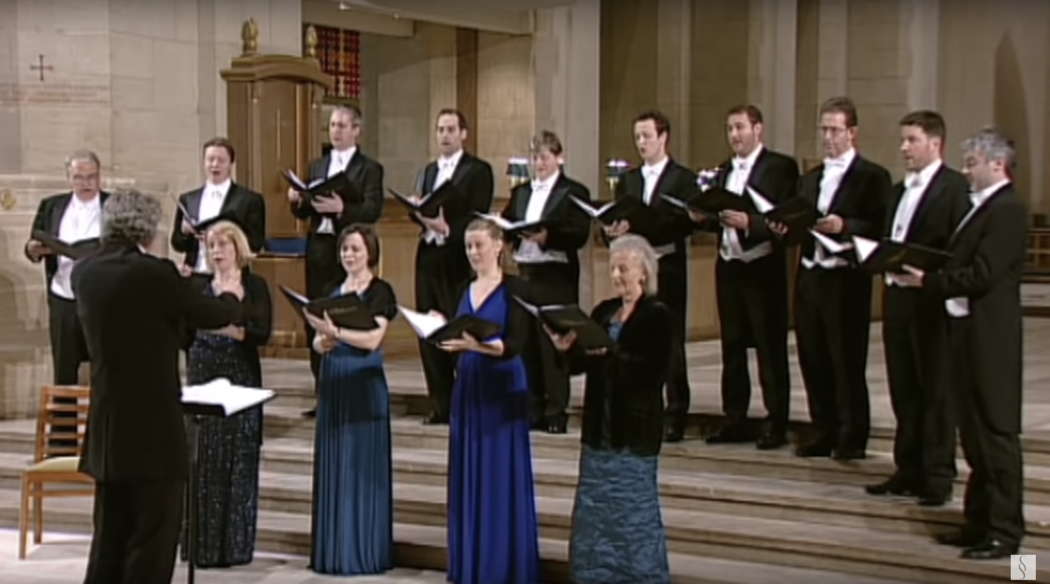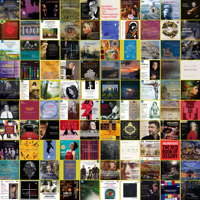- John Arab
- Jörg Demus
- Tudor Recording AG
- Anna Thorvaldsdóttir
- Santa Fe
- Celestial Voices 2
- Appen
- Paul Macalindin
Everything you know is wrong!
MIKE WHEELER listens to The Sixteen in Derby
'Allegri's Miserere: Everything you know is wrong!'. And with that challenge to our preconceptions - more on this later - The Sixteen and conductor Harry Christophers set off on their latest Choral Pilgrimage – Derby Cathedral, Derby UK, 2 July 2021.
Under the title The Call of Rome, it featured liturgical music by composers who worked there during the sixteenth century, from the last echoes of the mediaeval style to the dawn of the baroque period.
A plainsong setting of part of the Lamentations of Jeremiah had just the right balance of expressiveness and objectivity. The upper voices sang the initial Hebrew letters of each verse, traditionally part of any setting of the Lamentations, lower voices the Latin verses themselves, and all joined on the final plea, 'Jerusalem turn again to the Lord your God'.
The rest of the programme was intricately structured, the line-up of composers forming a palindrome beginning and ending with Victoria - 1543-1611: composers' dates were not given in the printed programme, which would have been helpful - with Felice Anerio (c 1560-1614) at its centre, and with textures ranging from four voices to nine.
The plainsong was followed by three of Victoria's Tenebrae Responsories for Holy Saturday, with effective use of solo voices in the middle sections. After Recessit Pastor Noster (Our shepherd ... is gone), O Vos Omnes (O all you that pass by ...) emerged as if from a shocked silence, weighed down by desolation. Sepulto Domino (Once the Lord was buried ...) was aptly restrained for a piece of pure narration.
If only for the sake of variety, it was good to skip back a couple of generations to Josquin des Prez (c1450-1521). The celebratory text of Gaude Virgo Mater Christi (Rejoice, virgin Mother of Christ) would have marked a change of tone in any case; here it positively danced.
To show that Allegri (1582-1652) composed other works besides his Miserere, we heard the Gloria from his Missa In Lectulo Meo. The shifting perspectives of the double-choir antiphony were vividly projected, and the rhythmic treatment of the text at a number of points had me wondering how aware Allegri may have been of what was happening in early seventeenth-century Venice. Felice Anerio's eight-voice Regina Caeli Laetare (Queen of Heaven, rejoice) was the programme's effective centrepiece, the singers bringing plenty of light and air into the textures.
And so to Allegri's Miserere. Ben Byram-Wingfield's helpful note outlined his extensive research into the work's convoluted history, and what we heard was both like and unlike the version that has become most familiar – to English-speaking choirs and audiences, at least. It is scored for double choir, one of five and one of four voices, singing alternate verses, interspersed with plainsong. The four-part choir, placed at the Cathedral's east end on this occasion, gets to sing the celebrated embellishments – the so-called abbellimenti, including the soprano top C – that have made the piece so popular. But here the accepted view of the work, which is surrounded by almost as much mythology as Mozart's Requiem, comes unstuck.

Harry Christophers and The Sixteen performing Allegri's Miserere (evolution version) in 2013
The choir gave us what was described as an 'evolution version', suggesting how the music for the four-part choir may have developed over the years. So the embellishments were different each time, and it made fascinating listening. The top C was there in the penultimate four-part verse, but the choir also had an ace up its sleeve. Roxanna Panufnik, Gabriel Jackson and Bob Chilcott were each commissioned to compose a new soprano line for the final four-part verse. We heard the one by Bob Chilcott who, like his colleagues, managed to sneak in an additional top C. (All three scores were reproduced in the programme.) It, and the one before, rang out as cleanly as you would expect. The work, of course, is a setting of a penitential text, not a vocal high-wire act, and to underline the point Harry Christophers held the silence at the end for an appreciable time.
Then it was back to Josquin for his motet Illibata Dei Virgo Nutrix (Inviolate mother, nurse of God), the five-part scoring making an effective break between the Allegri and the double-choir Victoria motet to come. The text may well be by Josquin himself, since the first half is an acrostic on his own name, and the second may be another, thought to hint at the name of his birthplace. Occasionally there were suggestions of mediaeval techniques, particularly at cadences, alongside a polyphonic style more typical of the sixteenth-century. Again, it was the vitality of Josquin's interweaving lines that made the biggest impression.
Victoria's double-choir Salve Regina (Hail Queen, Mother of mercy) was the concert's aptly sonorous culmination, but the way single lines emerged from the texture from time to time also caught the ear.
Not the least significant aspect of the evening was the choir's demonstration of how Derby Cathedral's sometimes problematic acoustic can be made to work. The answer? Spread out as much as possible. Certainly from where I was sitting the gain in clarity was remarkable. Perhaps every ensemble who performs here from now on should be distanced, virus or no virus.
The summer tour has now ended. An expanded version of the same programme will be toured around the UK from 15 September to 16 October 2021.
Copyright © 9 July 2021
Mike Wheeler,
Derby UK





